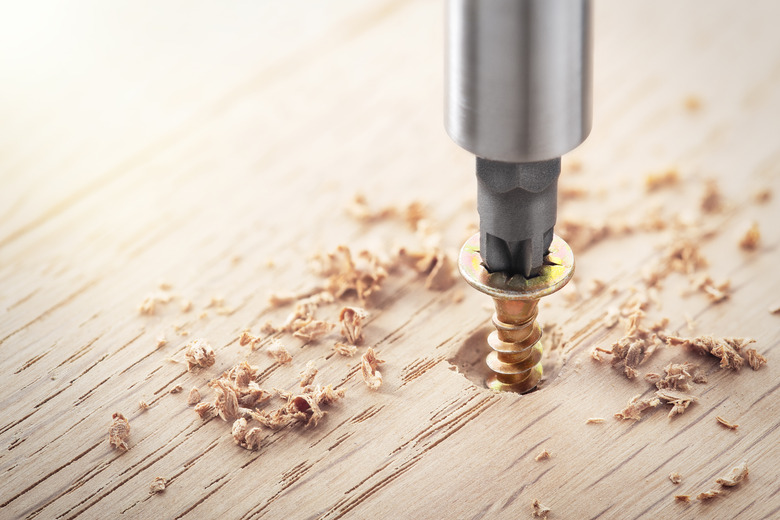4 Ways To Fix A Stripped Screw Hole
We may receive a commission on purchases made from links.
Is your screw stuck in an endless loop of spinning without taking hold? When you have a stripped screw hole, the threads can't grip the material, and the screw won't tighten to give you a secure hold. But you don't have to toss whatever you're working on or move your screw hole somewhere else. Several options allow you to secure the screw exactly where you want it.
1. Use a Bigger Screw
1. Use a Bigger Screw
The easiest way to deal with a stripped screw hole is to grab a different size of screw that's slightly longer or wider than the original. Since a longer screw has more threads, it has more of a chance to grip into the wood deeper in the hole. A wider screw might be large enough to grip into the material. However, a longer screw isn't always possible depending on the depth of your material, and a wider screw might not work for your project. In other situations, you might not have a bigger screw available, so you can try other methods.
2. Insert Wall Anchors
2. Insert Wall Anchors
If you can't get the screw to take hold in a wall, inserting plastic wall anchors can help. They're meant to secure screws in walls where screws don't grip well on their own. While commonly used on drywall or masonry, wall anchors also work on wood. They often work well on stripped door hinge screw holes, which can be difficult to fix using other methods.
To use wall anchors, follow these steps:
- Screw the hole using a drill bit that's the same size as the wall anchor.
- Use a countersink bit to countersink the holes slightly. This allows the lip of the anchor to be recessed so it won't interfere with the door hinge. You can skip this step if you don't mind the edge sticking out, and it won't interfere with how things work.
- Slip the wall anchor into the hole. Use a hammer to tap it gently into place.
- If you're using it on a hinge screw hole, position the hinge in place.
- Insert the screw into the anchor and tighten it.
3. Fill the Hole With Toothpicks
3. Fill the Hole With Toothpicks
A stripped screw hole is too large for the screw threads, so filling it in with more wood can fix the issue. A few wood toothpicks are inexpensive and often do the trick. You can use this solution with these steps:
- Place a few toothpicks in the hole. You don't need to fill it completely, but you want to make less space in the hole to give the screw something to grip. Three toothpicks are often enough in smaller holes, but you might need more in a bigger hole.
- Break off the toothpicks level with the top surface.
- Insert the screw in the middle of the toothpicks. Screw it into place.
4. Insert a Wooden Dowel
4. Insert a Wooden Dowel
There are many DIY dowel projects to spruce up your home, but these wooden rods also work to fix things like stripped screw holes. You'll need a wood dowel that's the same diameter as the hole. You might need to drill the hole to create a clean pathway for the dowel. Here are the steps for using a dowel:
- Cut a piece of dowel slightly longer than the depth of the hole.
- Apply glue on the dowel.
- Slide the dowel into the hole and let the glue dry.
- Sand the dowel flush with the surface. If it's too long to sand, you can cut it off with a saw and sand off the rest.
- Start a pilot hole with your drill.
- Insert the screw and tighten it.
